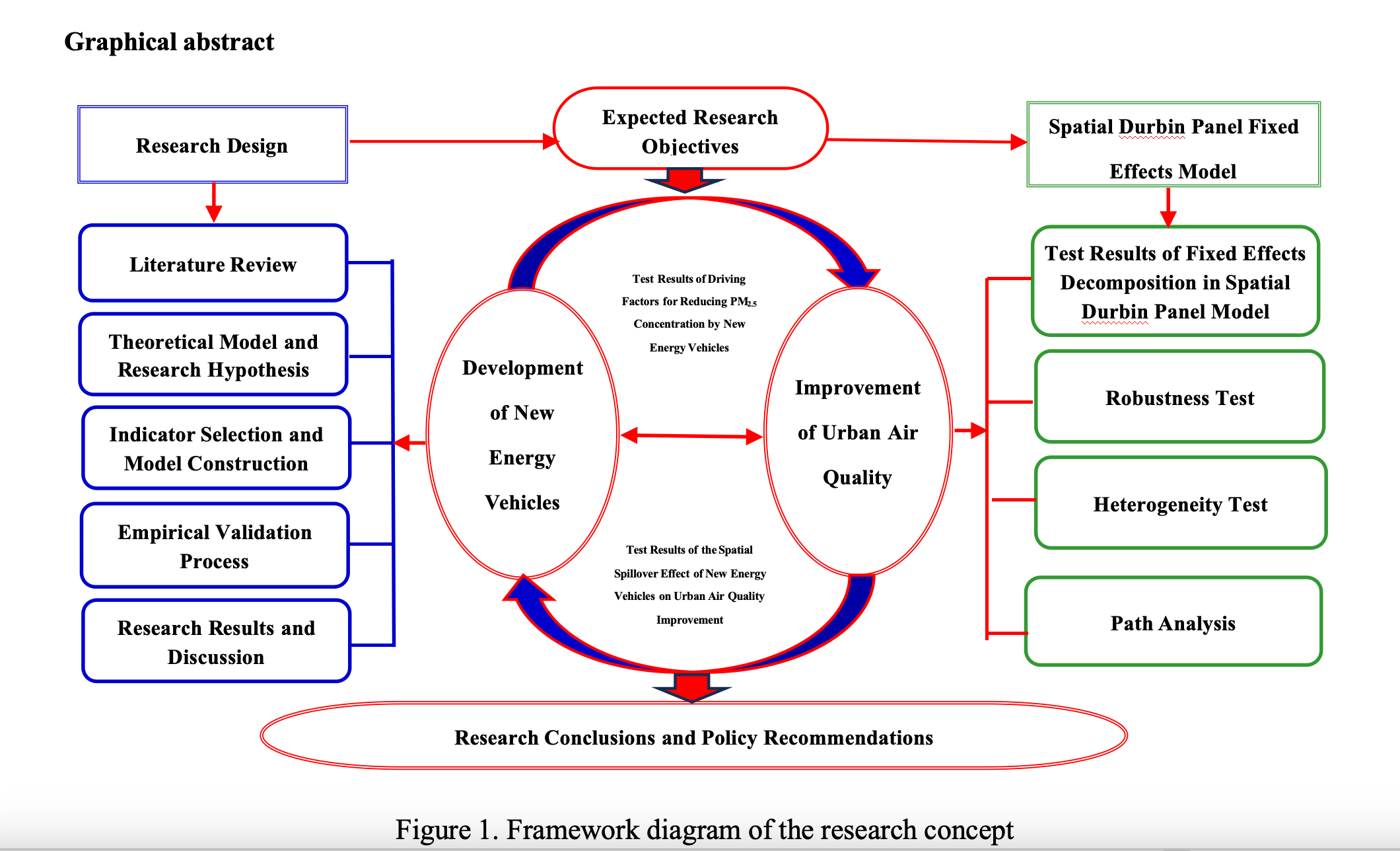
Abstract:This study aims to assess the impact of the new energy vehicle industry on urban air quality in China, focusing on the spatial and temporal variation of PM2.5 concentrations. Based on panel data from 286 prefecture-level cities in China from 2013 to 2022, an analytical framework is constructed, covering the development level of new energy vehicles, PM2.5 concentrations, and seven control variables (population size, the number of traditional fuel vehicles, etc.). A Spatial Durbin Model (SDM) and instrumental variable method are used to test for spatial spillover effects. The research confirms the spatial autocorrelation of PM2.5 through Moran's I index (0.3457) and verifies the robustness of the core conclusions. The results show that the development of new energy vehicles significantly reduces PM2.5 concentrations (total effect -2.980), with environmental regulation, industrial structure upgrading, and technological innovation being the key mediating pathways, contributing to emission reductions of -0.219, -0.236, and -0.394, respectively. Heterogeneity analysis indicates that the emission reduction advantages are more pronounced in economically developed cities and resource-based cities. The conclusion suggests strengthening differentiated policy support, improving charging infrastructure and battery recycling systems, to collaboratively promote air quality improvement and low-carbon transformation.
Total file downloads: 21